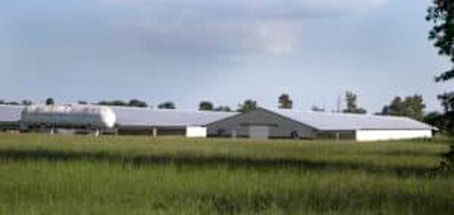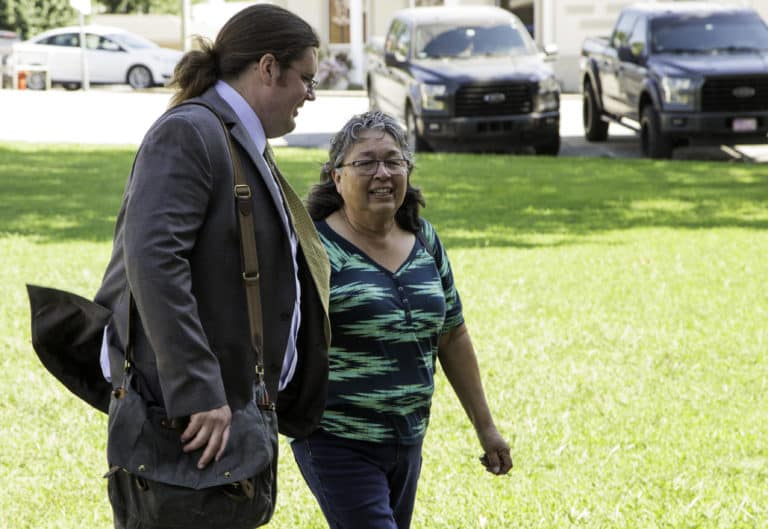Water Board told it must first consider pollution, water suppliesBy KELLY BOSTIAN For the CCOF Two Delaware County poultry operations hang in the balance after a state District Court judge ruled the Oklahoma Water Resources Board must pay more attention to environmental concerns. The fate of the two farms and three pending lawsuits now are at the center of what has become a long-running dispute between northeast Oklahoma residents and state agencies. The Water Resources Board and the Oklahoma Department of Agriculture, Food and Forestry issued permits for water wells and the construction of more than 200 new and expanded poultry operations in the area in 2017 and 2018. Tulsa-based Indian & Environmental Law Group named the Water Board in two suits on behalf of Delaware County residents. The law firm brought the third suit, against the Ag Department, on behalf of Spring Creek Coalition, a group of Spring Creek watershed landowners. That pending suit focuses on watershed pollution protections. All three cases accuse state agencies of failing to protect the area from potential surface water or groundwater pollution or potential water shortages. District Judge Barry Denney heard the two cases against the Water Board consecutively at district court in Jay last week. In both, he ruled to nullify water-use permits issued to large poultry farms and directed the agency back to the drawing board. In the first case, he ruled – for the second time – that the board failed to consider water quality impacts and potential pollution issues. In the second case, he ruled that the state must consider water quantity requirements and potential shortages before a permit is issued. Farmers ‘collateral damage’ With the permits nullified, Denney briefly discussed the future of each farm. He made it clear that no animals should be deprived of water, but said the permits should cease and that the farms should not have new flocks until the water permit issues are settled. Flocks cycle through the farms roughly every 90 days. He directed attorneys to come to an agreement that would not endanger animals currently housed in the facilities. “I’ve been on the phone a lot,” said Blaine Nice, attorney for Blossom Farm owners Donna Nguyen and Chau Tran. “I have talked with my clients and this will cost them a significant amount of money. They would have to lay off employees at the farm.” Farm owner Nghi Truong apparently chose not to be represented at the hearing involving his permit. “We are collateral damage in this,” Nice added. “I think the judge’s beef is with the Water Board but this impacts real people out there. I’m sympathetic to the plaintiffs but these people have done everything they were told to do, they followed all the rules, and they are just trying to make a living.” Indian & Environmental Law attorney Matt Alison, said the issue at Blossom should have been settled before the farm was up and running for two years. Denney ruled in February 2020 that the pollution concerns should have been addressed and that the Water Board had been wrong to issue several consecutive 90-day permits without a public hearing process. The law firm renewed its objections in the case after the Water Board allowed the farm to keep operating. The agency followed the court’s order to switch from a series of 90-day permits to a long-term temporary permit, which is issued through a hearing process overseen by a state hearing officer. New day, same ruling Denney reiterated his earlier ruling on the matter and disagreed with the state adjudicator’s decision to continue with the new long-term permit without addressing pollution concerns. “I am reversing the hearing examiner’s decision and order that it be remanded for further hearing with the issue of pollution being fully explored,” he said.
Denney said the state’s water quality standards demand a look at any potential pollution before a permit is issued, no matter the agency. “OWRB needs to look into it themselves or, before that hearing takes place, refer to ODAFF or another agency to look at that issue so at the hearing that issue can be fully explored,” he said.
The second case, involving the question of water quantity, played out in a similar manner. 2 acre-feet as a rule Alison argued that environmental concerns and water quality statutes are being ignored by the agency. Cole argued that state statutes are clear in definitions of beneficial use and waste and the agency is simply doing things by the book. Cole said that lacking a hydrologic survey of the aquifer that might direct the board otherwise, landowners are entitled, by law, to use up to 2 acre-feet of water per surface acre of land they own. Hydrological surveys are used to determine what is a “maximum annual yield” available to be shared among all users within that area without damaging the aquifer. Northeast Oklahoma farms, homes, and cities use the Boone and Roubidoux aquifers. Those aquifers have not yet had a hydrological survey to determine what is a responsible maximum annual yield. A five-year study is underway, however. One acre-foot is equal to an amount of water one foot deep over one acre of land, which equals 325,851 gallons. With 80 acres, the Truong farm is permitted to use 160 acre-feet of water, or 52.1 million gallons annually. Noting the Oklahoma Legislature called for hydrologic surveys of all the state’s aquifers 50 years ago, Denney asked, “why in the world have there not been hydrologic surveys done?” “As a native Oklahoman, I have to ask that question. Why has something that was ordered back in the ‘70s still not been done?” he said. Cole said he could not answer that question. Denney surmised that without an aquifer study, the worry that a facility might use more water than necessary should be of greater concern. The state’s hearing officer should have to consider what the facility needs, rather than accept the arbitrary 2 acre-feet maximum for any agriculture facility. “I don’t see how the OWRB can prevent waste if they don’t consider the issue of how much a property or a business actually uses,” he said. Kelly Bostian is an independent journalist writing for The Conservation Coalition of Oklahoma Foundation, a 501c3 non-profit dedicated to education and outreach on conservation issues facing Oklahomans. To learn more about what we do and to support Kelly’s work, see the About the CCOF page.
0 Comments
Leave a Reply. |
Archives
May 2024
Categories
All
|
Conservation Coalition of Oklahoma
P.O. Box 2751
Oklahoma City, OK 73101
[email protected]




